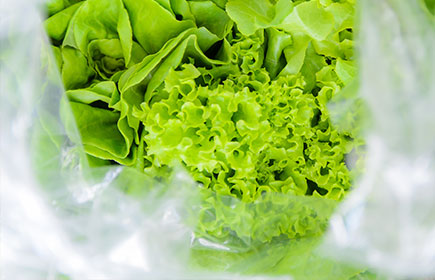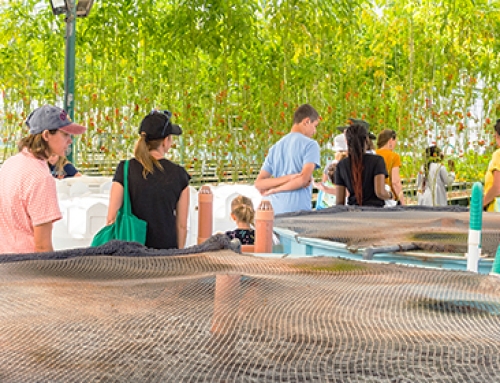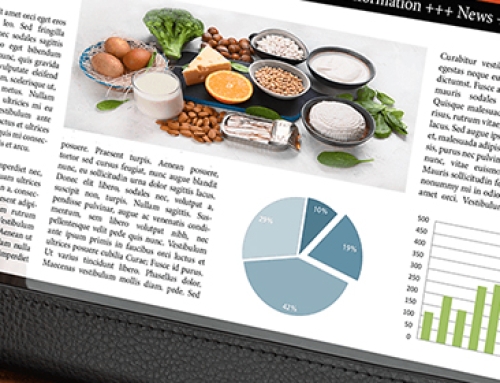
Washing fruits and vegetables is the only way to reduce microbial pathogens, both at domestic and industrial level.
In the summertime the consumption of cold meals grows, especially the one of fruits and vegetables.
Although these foods are safe from the nutritional point of view, they may pose some microbiological risks.
Many food poisonings are associated with vegetable products, as they can be contaminated with microbial pathogens such as Salmonella, Listeria monocytogenes, Escherichia coli, Norovirus, Yersinia, Campylobacter and many others.
Washing fruits and vegetables is the only way to reduce the diffusion of microbial pathogens, both at domestic and industrial level.
People at home usually wash vegetables with water and sometimes add antiseptic, baking soda, vinegar or salt.
In the food industry vegetables are instead immerged in water tanks with peracids, ozone or chlorine derivatives during the sanitizing process.
Fruit and vegetables market

Ready-to-eat vegetables and convenience food can be eaten without other treatments because they have been alreay washed and cooked at industrial level.
The fruit and vegetables market is divided into product types identified by the production processes and the way the final product is sold.
The product types include fresh, fresh cut, canned, frozen, dried, and convenience products, as the method of processing is different for each of these segments.
Fresh products should be washed before eating them. Instead, ready-to-eat vegetable products and convenience food can be eaten without other treatments because they have been already washed and cooked at industrial level.
Although ready-to-eat vegetables and convenience food products are more expensive than fresh products, their market is growing because they enable the consumer to save time and effort in food preparation.
Although the label of these products declares they are ready for consumption, some consumers are still suspicious and wash the products anyway.
IZSVe research
A project conducted by the Istituto Zooprofilattico Sperimentale delle Venezie (RC IZS VE 19/11) investigated the effectiveness of the washing methods for salad, both at domestic and industrial level.

A project conducted by the IZSVe has investigated the effectiveness of the washing methods for ready-to-eat salad, both at domestic and industrial level.
Herebelow the research steps:
- Step 1: survey on the washing methods
The survey collected information about how people usually wash salad at home (through an on-line questionnaire filled by about 200 consumers) and in food industry (by analyzing the processes used by 4 factories). - Step 2: contamination and sanitizing simulations
The effectiveness of the main washing procedures gleaned from the survey to reduce the bacterial load and ensure food safety was then verified. Challenge tests were used for this purpose, i.e. a laboratory simulation of contamination and sanitation of product samples. - Step 3: sampling and analysis of industrial products
The effectiveness of industrial processes was verified through analytical control of 207 lots to be sell after their sanitization process (52 of fresh product, 155 of cut product) to identify resistant pathogens.
Results
![Ready-to-eat salad: is it safe for consumption? The effectiveness of the washing methods [infographic]](https://www.izsvenezie.com/wp-content/uploads/2015/07/infographic-ready-to-eat-salad-safe-for-consumption.jpg) Survey on washing procedures
Survey on washing procedures
The survey on domestic practices shows that half of consumers (50% of respondents) washes salad with water only, about a quarter with sodium bicarbonate (24%) and about another quarter with chlorine derivatives (24%). Typically, there are three or more washes (64%) and only 5% of respondents performs a single wash.
The producers mainly use peracids (56% of the analyzed lots) or ozone (16%). They avoid chlorine derivatives because of the alteration of organoleptic characteristics of the product involved. When the consumer opens the pre-packed vegetable product, he perceives an unpleasant smell of chlorine that surely does not stimulate the appetite.
Challenge test
The effectiveness of the washing methods was evaluated in laboratory as the mean log reduction of the microbial load. For the study Salmonella spp. and Listeria monocytogenes were adopted as food safety criteria, microorganisms at 30°C and coliform bacteria were adopted as process hygiene criteria.
The arugula was used for the experiment, as the leaf shape and the conformation of the surface of this vegetable make it one of the most critical plant to pathogen contamination.
In general washing with chlorine derivatives was the most effective method among all microbiological criteria and treatment technologies considered. Washing with peracids (for food safety criteria) and washing with vinegar (for hygiene criteria) followed in order.
The operating protocol based on the use of ozone was not tested because of the health risks due to the manipulation of ozone.
Self-regulation analysis
4 samples were found positive by the analysis carried out on samples from the lots destined to self-control, including 2 samples of ready-to-eat veggies. In particular:
- 2 positive samples for Listeria monocytogenes in fresh vegetable
- 1 positive sample for Listeria monocytogenes in ready-to-eat vegetables
- 1 positive sample for Salmonella spp. in ready-to-eat vegetables
However this findings don’t represent a risk for the consumer. The presence of some positive samples may be accidental. Moreover the pathogenic microorganisms need to reach a certain amount (infectious dose) to cause a poisoning in the host, and the short shelf life of ready-to-eat vegetables (5-7 days) does not permit to bacteria to reach the infectious dose.
Conclusions
The study shows that washing with chlorine derivatives is the most effective method at home. At industrial level treatment with peracids is effective in sanitizing ready-to-eat vegetables and at the same time ensures the absence of residues, not altering the organoleptic characteristics of the product.
The project shows that companies can improve their hygiene standards through the activities of self-regulation. The companies participating in the project have reduced the prevalence of positive samples for food safety criteria with respect to data collected by a previous study of the epidemiological surveillance.







